Masked Pure Tone Audiometry
One of the most challenging aspects of audiology discussed
Masking is a specialized skill that often requires years of practice to master. The ability to discern when and how to apply masking is a crucial aspect of audiometry, requiring sound judgment and experience to determine when reliance on masking is no longer effective. The symbols denoting masked and unmasked thresholds play a significant role, signifying that the clinician has utilized masking noise to offset interference from the non-test ear. Consequently, the masked symbols provide more precise, ear-specific results. On the audiogram, the triangle symbol △ is used for the right ear's masked thresholds, while the square symbol □ is employed for the left ear. Additional symbols for masked and unmasked thresholds can always be found in the audiogram legend. Explore the tabs below for detailed insights on the application of masking in pure tone audiometry.
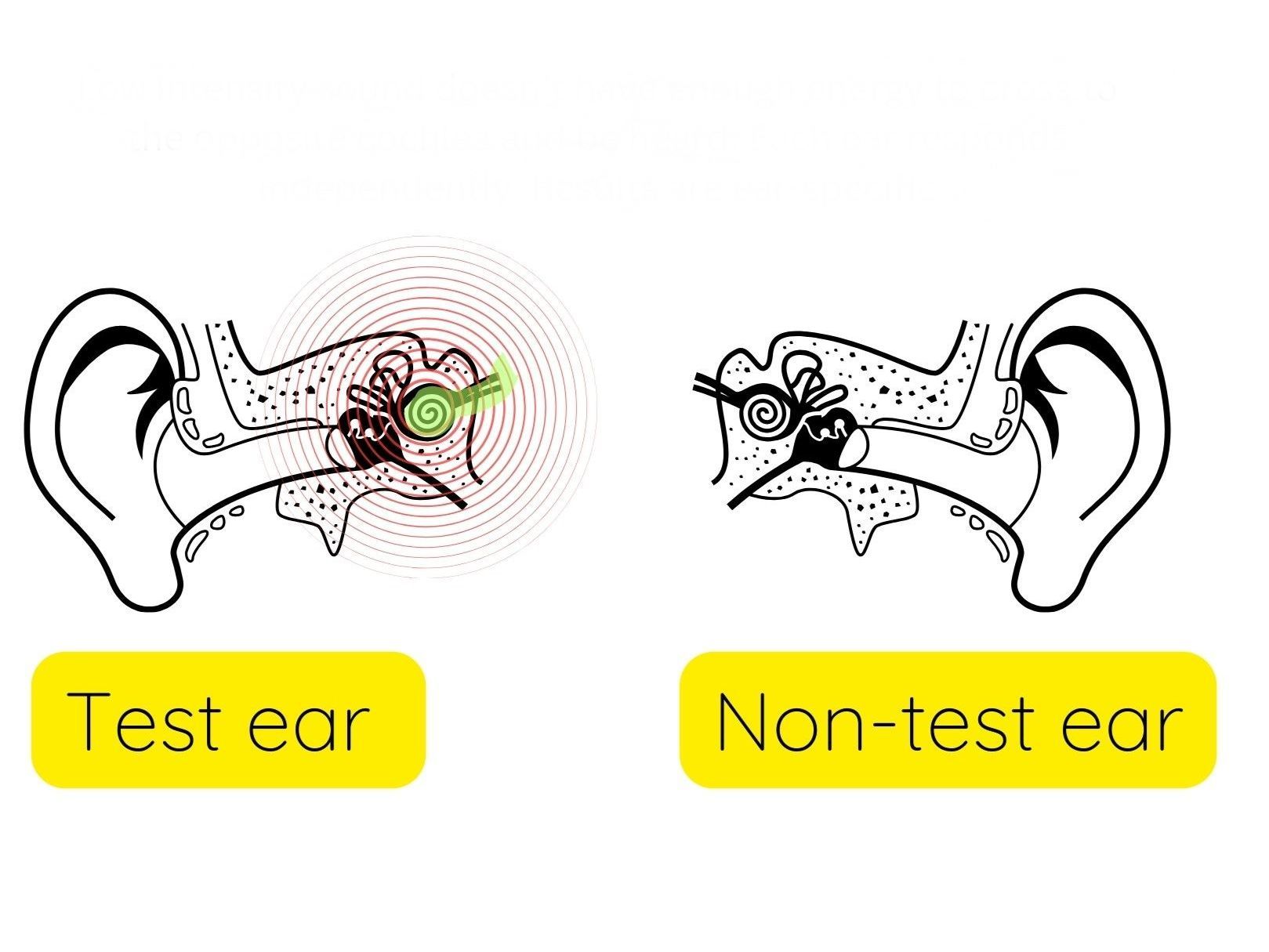
Masking is not always needed
Not all thresholds on all audiograms need to be masked. Masking rules will apply whenever certain conditions are met.
In the graphic, the threshold of the ear being tested (right ear) is good enough that the patient will hear it in the test ear only.
The sound in the test ear is not loud enough to 'spill over' into the non-test ear, and we can be assured that we are measuring ear-specific results.
Masking is only needed if the sound in the test ear becomes loud enough to be heard in the non-test ear.
Depending on how the sound was delivered (whether through headphones, insert earphones or bone conduction), there are different intensity values for when a sound may cross over to the opposite ear.
This value is called the interaural attenuation and relates to averages established for that particular headset.
Insert headphones have the highest attenuation, meaning that louder sounds can be played with insert headphones without cross-over occurring.
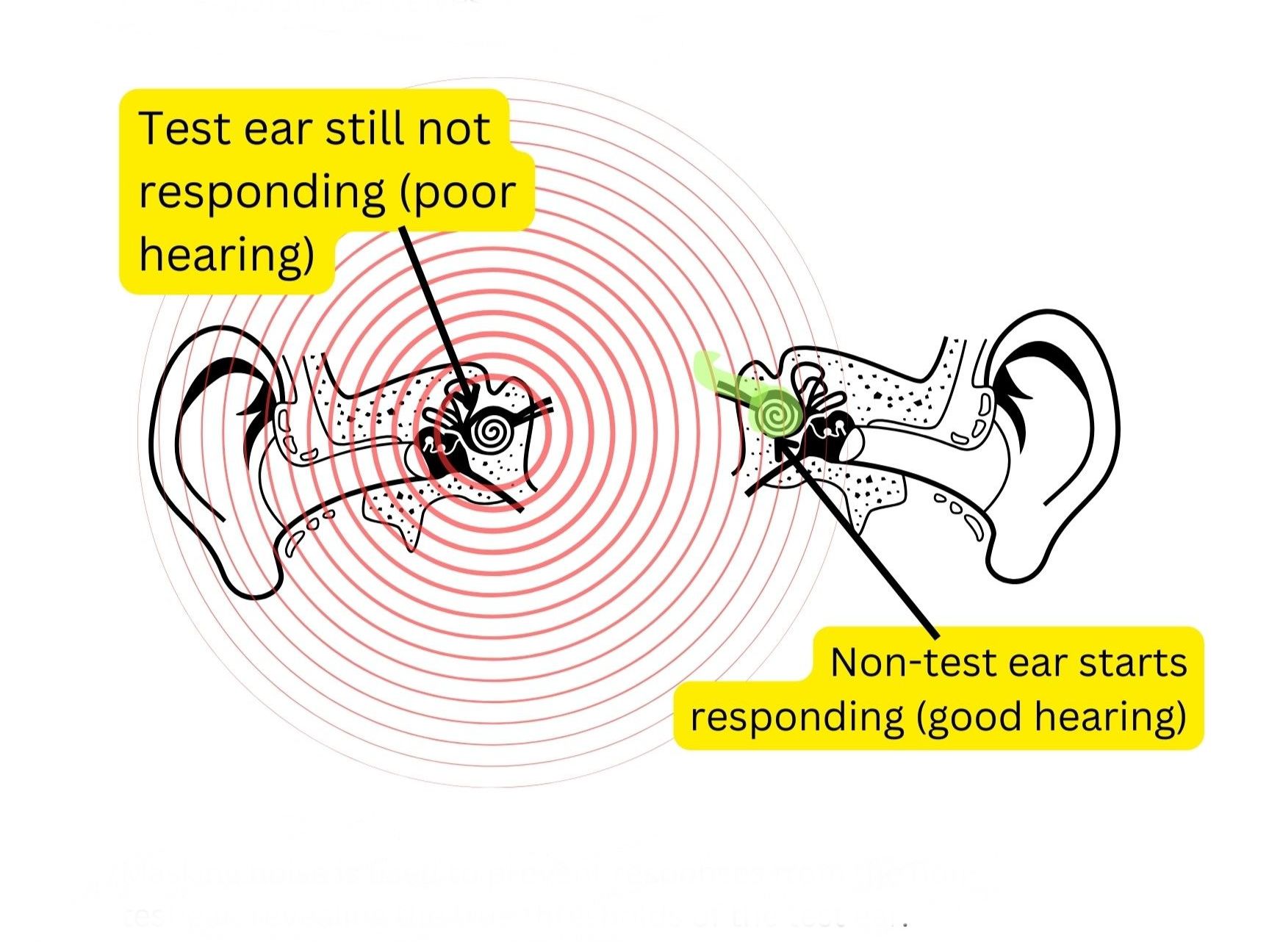
Cross-hearing can occur when sounds get loud
In this graphic, the patient's right ear is far worse than the left ear, which has a normal cochlea.
Imagine that during a hearing test, the right ear does not respond to quiet or even moderate signals. After increasing the intensity in the right ear several more times, the audiologist eventually gets a response.
However, which ear is hearing the signal?
The right ear may not be the ear responding. Instead, in this example, the normal left cochlea may receive the signal across the head before the right ear can hear it.
The intensity of the sound in the right ear became high enough that sound energy spilled over towards the left ear as bone-conducted sound, and the patient started responding to sound and indicating that it was being heard.
This phenomenon of cross-hearing is the reason that masking is used in audiometry.
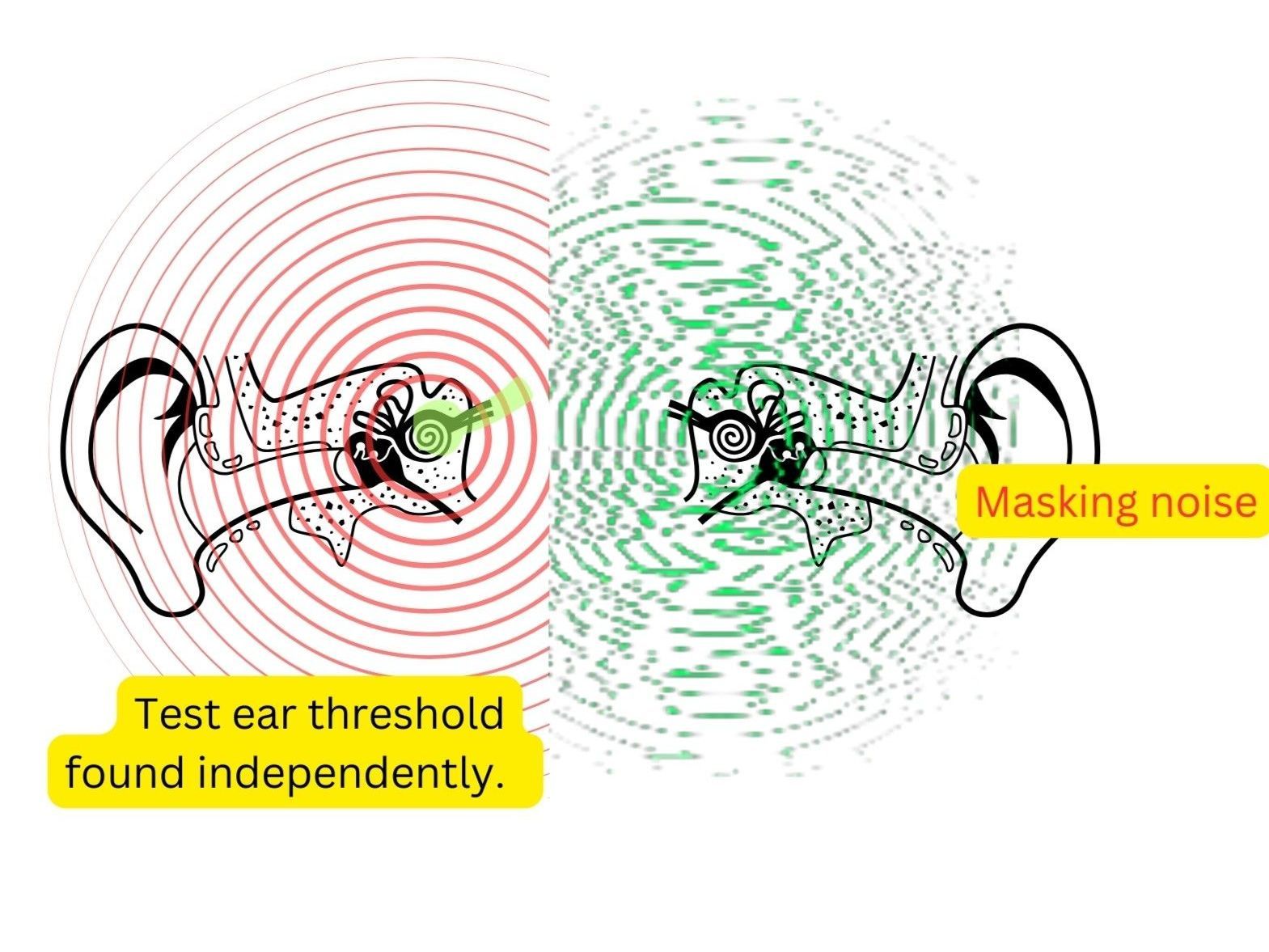
Masking is a complex process
To get ear-specific results, an audiologist uses specially calibrated noise at a specific sound level to 'mask' any potential sounds crossing over from the test ear to the non-test ear.
Masking will reveal the true thresholds of the test ear by eliminating any contributions from the non-test ear. Once a new threshold is found, the masking noise is increased in small steps several times to ensure that the true thresholds are decidedly ear-specific.
Masking can have limitations; not all hearing loss configurations can be defined as completely ear-specific.
The audiologist should take great care to ensure that other healthcare providers understand any limitations in the ability to show ear-specific thresholds, especially if the patient is being referred to a specialist or ear surgeon for medical management.
The cross-check principle should apply to place the audiogram in context with other findings before decisions are made about whether medical management is required for a particular hearing loss.
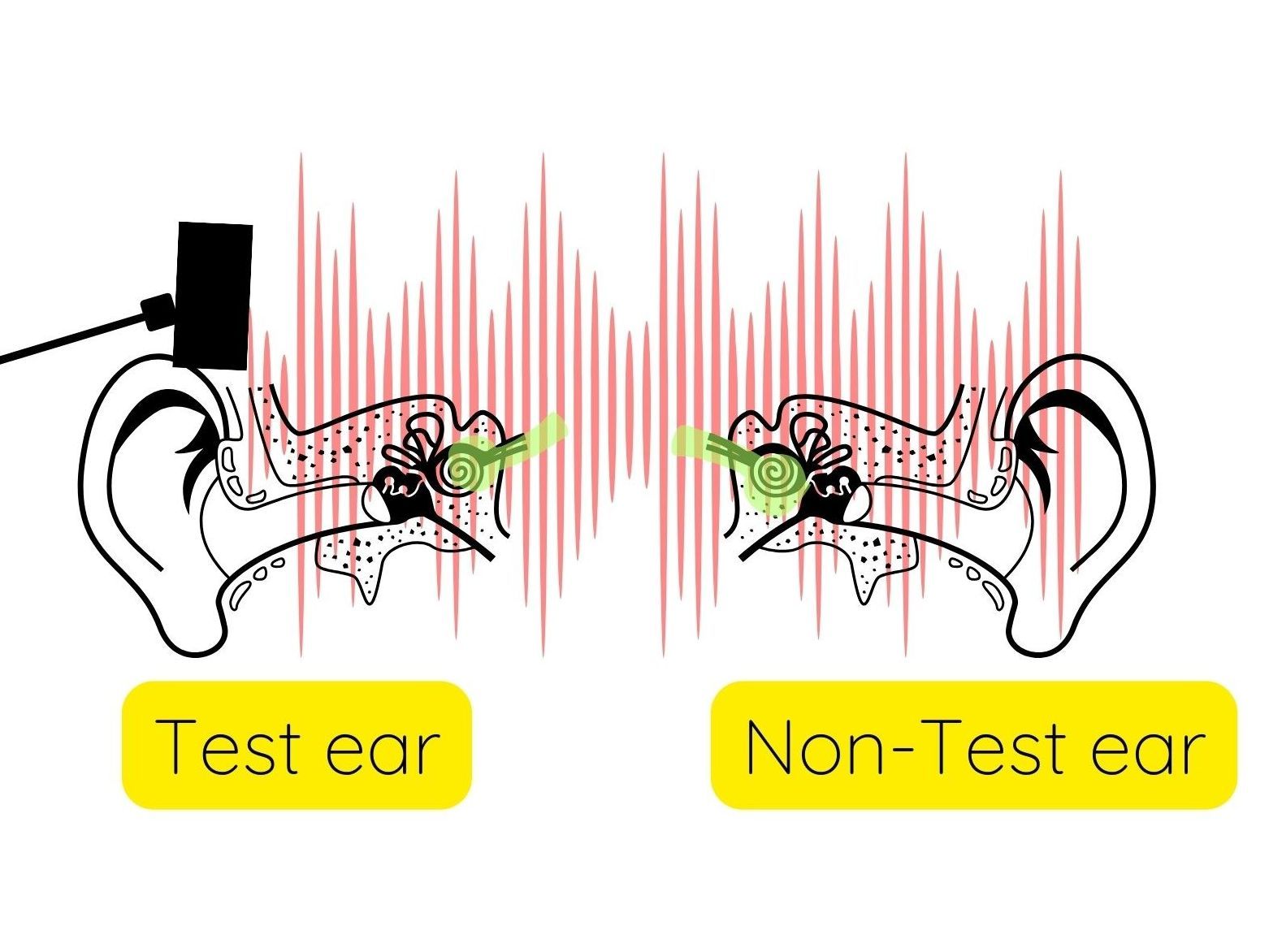
Bone conducted sound does not get attenuated easily
We measure bone conduction by placing an oscillating transducer against the patient's mastoid or forehead. The patient responds to sounds at the minimum threshold at which they can detect them, just as they do with standard air conduction audiometry.
Without masking, bone conduction audiometry can represent a couple of things.
- The better ear could be responding if there is purely sensorineural hearing loss, and there is an asymmetry of sensory thresholds.
- Both ears are completely symmetrical and have no conductive hearing loss.
- The ear with the larger conductive loss may be responding to the stimulus rather than the 'better' ear.
Masking is needed to provide ear-specific information for bone-conducted sounds.
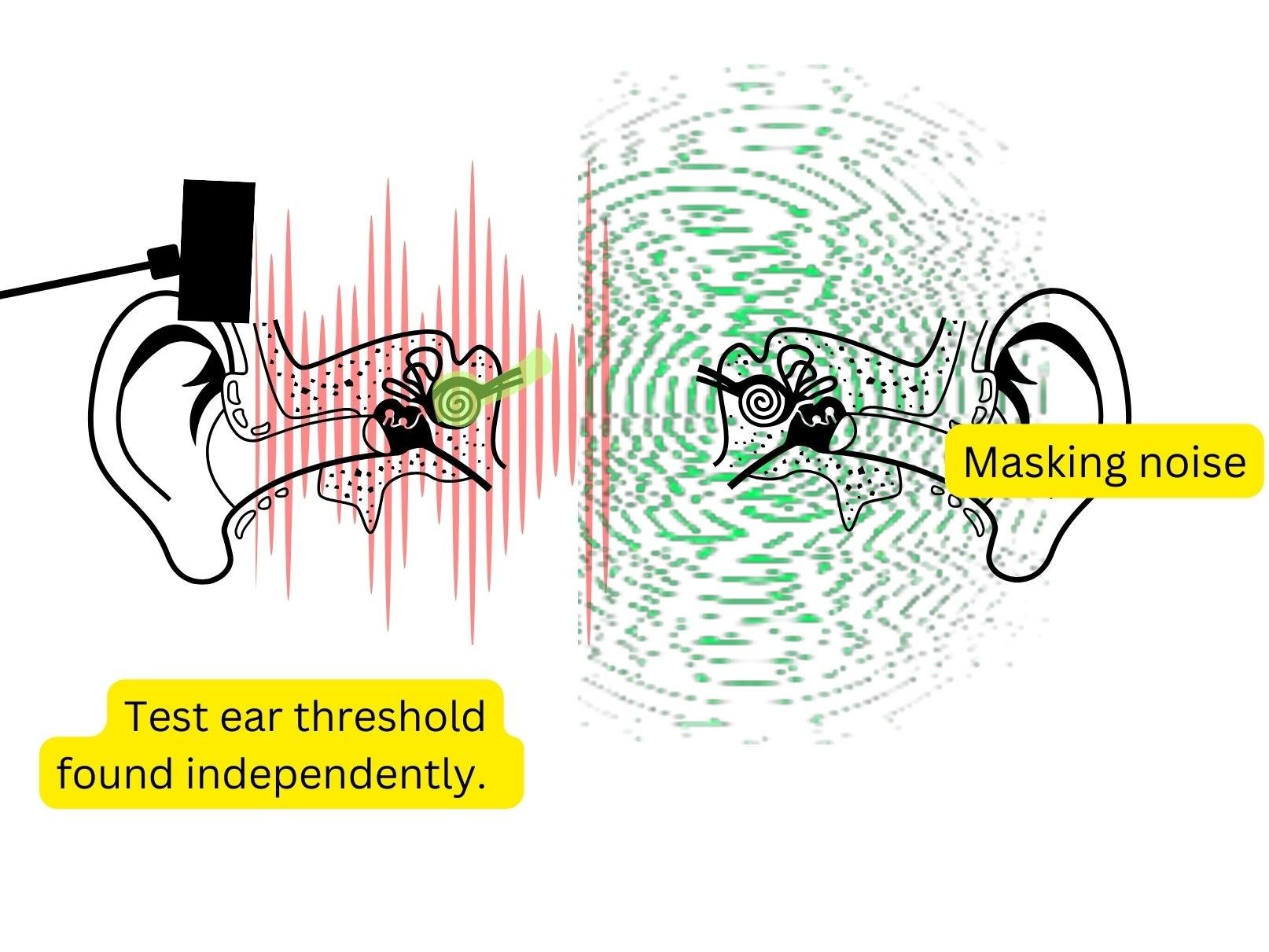
Bone conduction masking is needed more often
During bone conduction testing, the non-test ear often requires masking to overcome bone-conducted sounds' low inter-aural attenuation properties.
An air-conduction headphone or insert phone delivers sound to the non-test ear and ensures the correct measurement of bone conduction thresholds.
Unmasked bone conduction thresholds are indicated with the < or > symbol, while masked bone conduction thresholds are indicated with the [ or ] symbol.
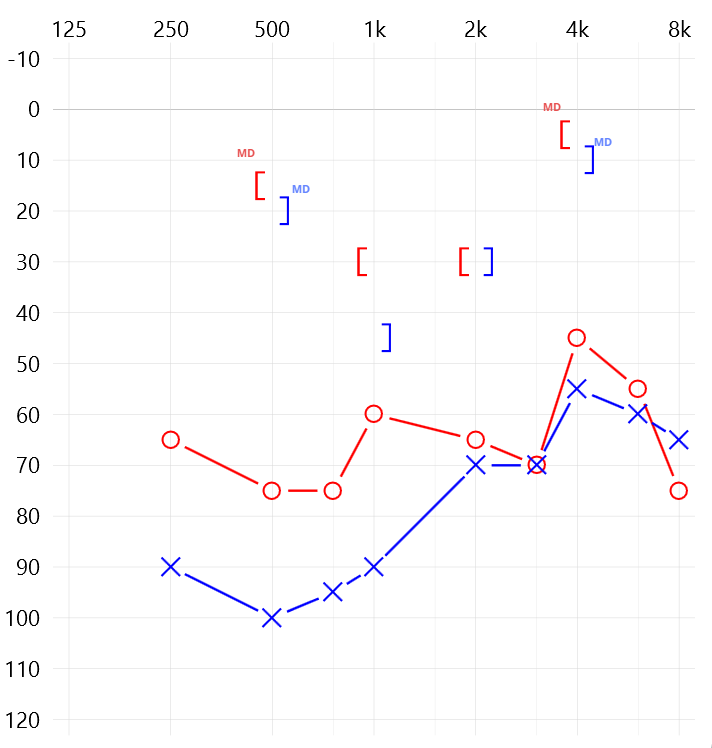
When enough masking is too much.
When significant conductive hearing loss is present in the non-test ear, and the inner ear on each side is relatively good, the masking noise required to prevent cross-hearing might be so loud that it crosses back into the test ear, leading to inaccurate or uncertain results. It becomes a case of "enough masking is too much masking.
As mentioned, an audiologist will record when a masking dilemma is present by labelling the specific thresholds with the MD symbol and outlining its implications in the report.
This figure shows bilateral conductive loss. Bilateral conductive hearing loss prevents effective masking at certain frequencies, as masking levels would interfere with the results.
There are several ways to reduce the chance of masking dilemmas interfering with audiometric findings. If an alternative cross check has been used, you will find it detailed in the report.
Visit us
#20 4051 4th Ave S, Lethbridge AB T1J 4B5
Reception Hours
- Mon - Fri
- -
- Sat - Sun
- Closed

